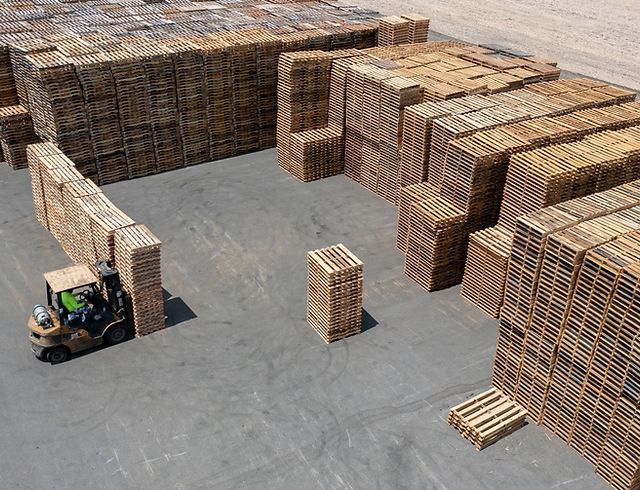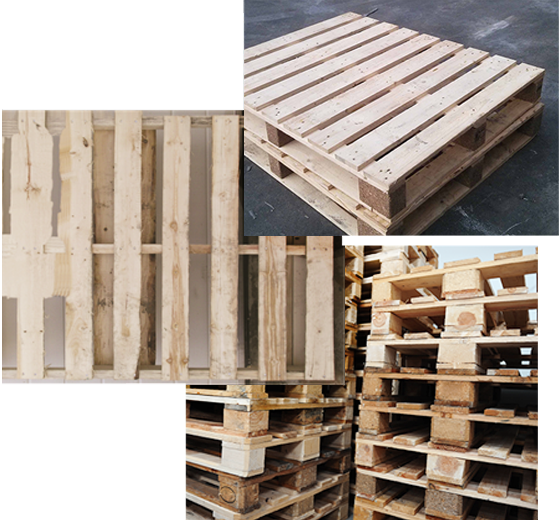The Ultimate Guide to Pallet Supplier (2025)
Introduction: Navigating the Global Market for pallet supplier
Navigating the global market for pallet suppliers presents a unique challenge for B2B buyers, especially in regions like Africa, South America, the Middle East, and Europe. The need for reliable and cost-effective pallet solutions is critical, as these products serve as the backbone of logistics and supply chains. Whether you are sourcing wooden, plastic, or metal pallets, understanding the nuances of each type can dramatically impact your operational efficiency and cost management.
This comprehensive guide will delve into various aspects of pallet procurement, including types of pallets, their applications across different industries, supplier vetting processes, and cost considerations. By addressing the specific needs and challenges faced by international buyers, particularly those in emerging markets such as Egypt and South Africa, this guide aims to empower you with the knowledge required to make informed purchasing decisions.
You will learn about the importance of compliance with international standards and sustainability practices, which are increasingly becoming essential in today’s global marketplace. Additionally, we will highlight key strategies for negotiating with suppliers and optimizing your supply chain logistics. With this information, you will be better equipped to select the right pallet supplier that aligns with your business needs, ensuring efficiency and reliability in your operations.
Understanding pallet supplier Types and Variations
| Type Name | Key Distinguishing Features | Primary B2B Applications | Brief Pros & Cons for Buyers |
|---|---|---|---|
| Wooden Pallets | Traditional, sturdy, biodegradable | Food and beverage, manufacturing | Pros: Cost-effective, strong; Cons: Susceptible to pests, moisture. |
| Plastic Pallets | Lightweight, durable, resistant to chemicals | Pharmaceuticals, electronics | Pros: Long lifespan, easy to clean; Cons: Higher upfront cost, less recyclable. |
| Metal Pallets | Heavy-duty, corrosion-resistant | Automotive, heavy machinery | Pros: Extremely durable, reusable; Cons: Expensive, heavy. |
| Composite Pallets | Made from a mix of materials, often lightweight | Retail, logistics | Pros: Versatile, resistant to moisture; Cons: May not be as strong as wood. |
| Collapsible Pallets | Designed for easy storage and transport | E-commerce, distribution centers | Pros: Space-saving, efficient shipping; Cons: May have lower load capacity. |
What Are the Characteristics of Wooden Pallets?
Wooden pallets are the most traditional type, known for their strength and cost-effectiveness. They are widely used in various industries, particularly in food and beverage sectors, due to their ability to handle heavy loads. When considering wooden pallets, B2B buyers should evaluate factors such as moisture resistance and susceptibility to pests, as these can affect the integrity of the pallets over time. Additionally, wooden pallets are biodegradable, making them an environmentally friendly option if sourced sustainably.
How Do Plastic Pallets Compare for B2B Needs?
Plastic pallets offer a modern alternative to wooden options, characterized by their lightweight and durable nature. They are especially suitable for industries that require hygiene, such as pharmaceuticals and electronics, due to their resistance to chemicals and easy-to-clean surfaces. While their initial cost is typically higher than wooden pallets, their longevity and reusability can lead to cost savings over time. Buyers should consider the specific requirements of their products, including weight and environmental exposure, when selecting plastic pallets.

A stock image related to pallet supplier.
What Are the Advantages of Metal Pallets?

A stock image related to pallet supplier.
Metal pallets are designed for heavy-duty applications, making them ideal for industries like automotive and heavy machinery. Their corrosion-resistant properties ensure they maintain their structural integrity over extended periods, even in harsh environments. However, the high upfront cost and weight of metal pallets can be a drawback for some buyers. When purchasing metal pallets, it’s crucial to assess load requirements and storage conditions to ensure they meet operational needs.
Why Choose Composite Pallets for Versatility?
Composite pallets are made from a blend of materials, offering a balance between strength and weight. They are versatile and resistant to moisture, making them suitable for retail and logistics applications. While they may not provide the same level of strength as wooden pallets, their lighter weight can lead to lower shipping costs. B2B buyers should consider the specific use case and whether the benefits of moisture resistance and versatility align with their operational requirements.
What Are the Benefits of Using Collapsible Pallets?
Collapsible pallets are designed for efficient storage and transportation, making them an excellent choice for e-commerce and distribution centers. Their ability to collapse reduces the space required for storage, leading to cost savings in logistics. However, they may have a lower load capacity compared to other pallet types, which is an important consideration for buyers with heavy products. When evaluating collapsible pallets, businesses should weigh the benefits of space savings against their load requirements to find the best fit.
Related Video: Pallet Rack 101 – how to determine layout and quantities of rack needed in your warehouse
3 Common User Pain Points for ‘pallet supplier’ & Their Solutions
Scenario 1: Difficulty in Finding Reliable Pallet Suppliers
The Problem: Many international B2B buyers, especially from regions like Africa and South America, struggle to find reliable pallet suppliers that can meet their specific logistical and quality needs. This challenge is compounded by varying standards and regulations across countries, leading to concerns about the quality of materials and compliance with local requirements. Buyers often face delays and increased costs when their chosen suppliers fail to deliver on time or provide subpar products that don’t withstand the rigors of international shipping.
The Solution: To navigate this challenge effectively, buyers should conduct thorough due diligence before selecting a pallet supplier. This involves researching potential suppliers through online directories, industry trade shows, and networking within industry associations. Key factors to assess include supplier certifications (such as ISO standards), customer reviews, and their experience in international shipping. Additionally, buyers can request samples to evaluate the quality of the pallets firsthand. Establishing a clear communication channel with suppliers about delivery timelines and quality expectations can also mitigate risks. Forming partnerships with suppliers who have a proven track record in your region can enhance reliability.
Scenario 2: Managing Pallet Inventory and Costs
The Problem: A common pain point for B2B buyers is managing pallet inventory efficiently while keeping costs under control. Companies often find themselves overstocked with pallets that may become damaged or obsolete, leading to unnecessary expenses. Conversely, running out of pallets can disrupt operations and delay shipments, impacting customer satisfaction. This balancing act becomes particularly complex for companies operating across diverse markets with fluctuating demand.
The Solution: Implementing an inventory management system tailored to your pallet supply needs can significantly enhance efficiency. Buyers should adopt a just-in-time (JIT) inventory approach, which allows for reduced holding costs and minimized waste. This can be achieved by analyzing historical sales data to forecast demand accurately and adjust orders accordingly. Additionally, establishing strong relationships with multiple suppliers can provide flexibility in scaling up or down based on real-time needs. Utilizing technology, such as RFID tracking for pallets, can also streamline inventory management, helping to track usage and optimize stock levels.
Scenario 3: Compliance with Environmental Regulations
The Problem: As environmental concerns grow globally, B2B buyers face the challenge of ensuring their pallet suppliers comply with increasingly stringent environmental regulations. Buyers from Europe and the Middle East, in particular, must navigate complex compliance requirements regarding sustainable sourcing and recycling of pallets. Failure to comply not only risks fines but can also tarnish a company’s reputation and lead to loss of business.
The Solution: To address this issue, buyers should prioritize working with pallet suppliers who are committed to sustainability and can provide documentation regarding their environmental practices. This includes sourcing pallets from responsibly managed forests, using recycled materials, and offering pallet recycling programs. Buyers can also engage in discussions with suppliers about their sustainability initiatives and seek certifications that demonstrate compliance with international environmental standards. Educating your procurement team about relevant regulations and potential impacts can also foster better decision-making when sourcing pallets. By aligning with suppliers who share similar values regarding environmental stewardship, businesses can enhance their own brand image while ensuring compliance.
Important Disclaimer & Terms of Use
⚠️ Important Disclaimer
The information provided in this guide, including content regarding manufacturers, technical specifications, and market analysis, is for informational and educational purposes only. It does not constitute professional procurement advice, financial advice, or legal advice.
While we have made every effort to ensure the accuracy and timeliness of the information, we are not responsible for any errors, omissions, or outdated information. Market conditions, company details, and technical standards are subject to change.
B2B buyers must conduct their own independent and thorough due diligence before making any purchasing decisions. This includes contacting suppliers directly, verifying certifications, requesting samples, and seeking professional consultation. The risk of relying on any information in this guide is borne solely by the reader.